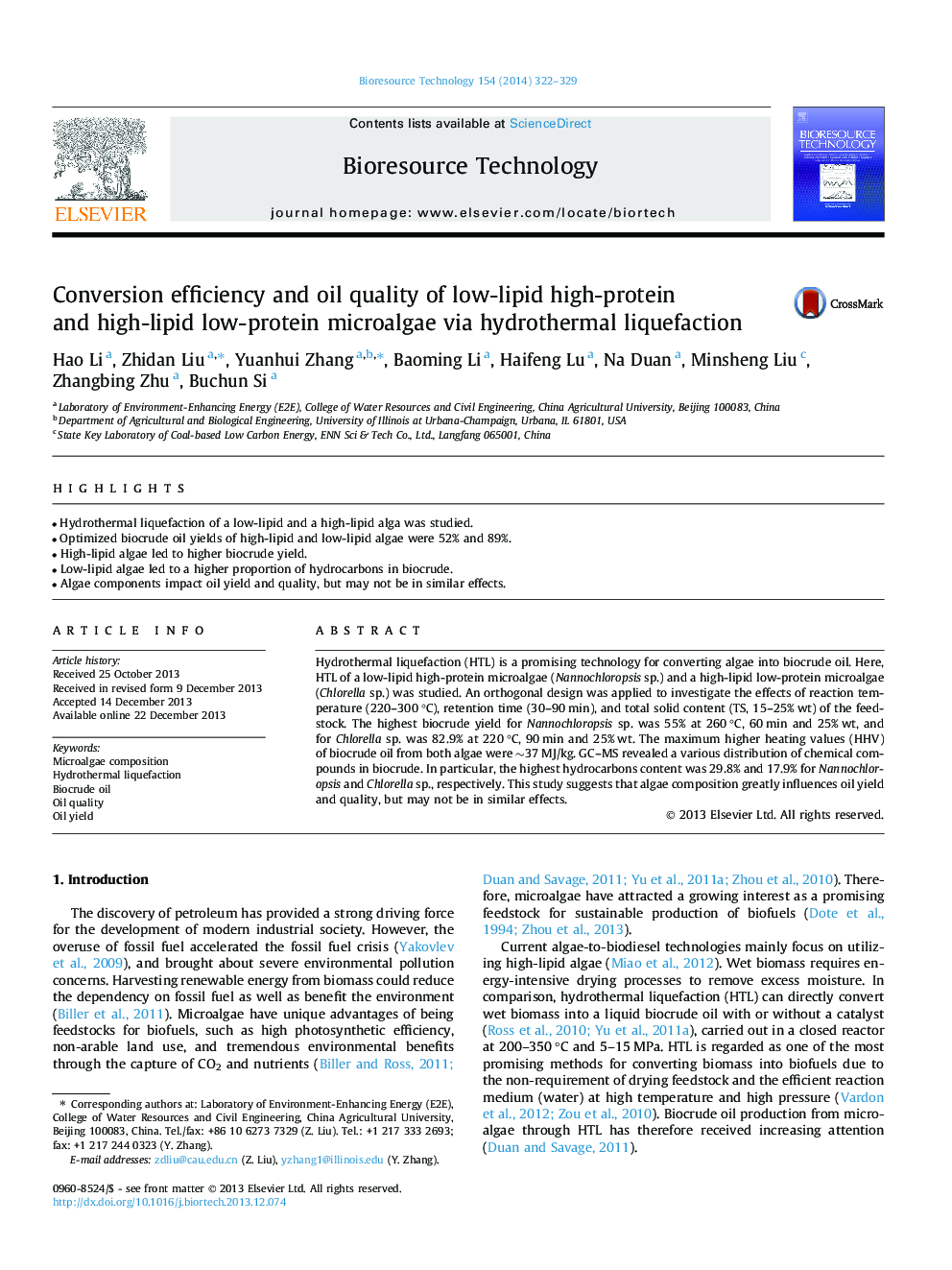| Article ID | Journal | Published Year | Pages | File Type |
|---|---|---|---|---|
| 7079126 | Bioresource Technology | 2014 | 8 Pages |
Abstract
Hydrothermal liquefaction (HTL) is a promising technology for converting algae into biocrude oil. Here, HTL of a low-lipid high-protein microalgae (Nannochloropsis sp.) and a high-lipid low-protein microalgae (Chlorella sp.) was studied. An orthogonal design was applied to investigate the effects of reaction temperature (220-300 °C), retention time (30-90 min), and total solid content (TS, 15-25% wt) of the feedstock. The highest biocrude yield for Nannochloropsis sp. was 55% at 260 °C, 60 min and 25% wt, and for Chlorella sp. was 82.9% at 220 °C, 90 min and 25% wt. The maximum higher heating values (HHV) of biocrude oil from both algae were â¼37 MJ/kg. GC-MS revealed a various distribution of chemical compounds in biocrude. In particular, the highest hydrocarbons content was 29.8% and 17.9% for Nannochloropsis and Chlorella sp., respectively. This study suggests that algae composition greatly influences oil yield and quality, but may not be in similar effects.
Related Topics
Physical Sciences and Engineering
Chemical Engineering
Process Chemistry and Technology
Authors
Hao Li, Zhidan Liu, Yuanhui Zhang, Baoming Li, Haifeng Lu, Na Duan, Minsheng Liu, Zhangbing Zhu, Buchun Si,
